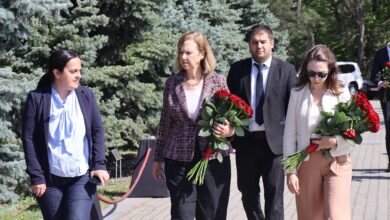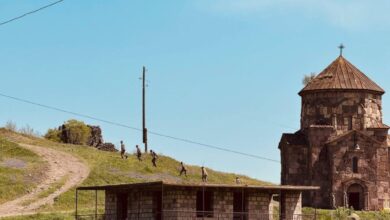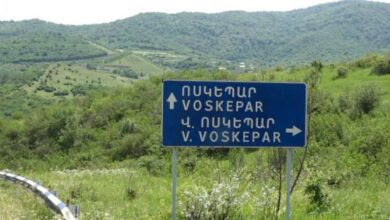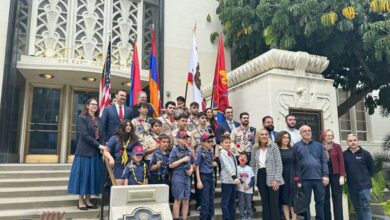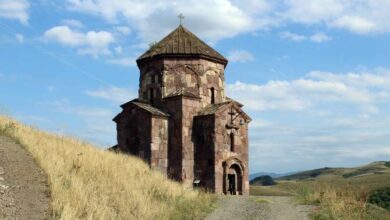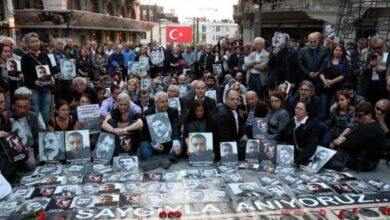A small country but a big nation: How genocide shaped the Armenia of today – The Guardian

As Armenians mark the beginning of violence that left 1.5 million dead, Turkey’s lack of contrition leaves descendants struggling to reconcile loss and renewal, The Guardian‘s Ian Black writes.
“In the beginning you hardly notice them: little lapel buttons in purple, yellow and black to mourn the dead and a lost homeland. But then there are the posters, T-shirts, umbrellas, bumper stickers, even cakes, all bearing the same forget-me-not flower designed to commemorate the tragedy of a nation,” he writes.
It is the symbol of the centenary of the Armenian genocide of 1915, being marked this week in solemn ceremonies in Yerevan and wherever in the world this ancient people fled in the wake of the mass atrocities suffered in the dying days of the Ottoman empire.
The centenary on 24 April provides a rare opportunity to focus global attention on killings that were once notorious, then faded from view, were fought over in a vicious propaganda war, and are now widely seen as a crime on a monumental scale – and a grim precursor to the Nazi Holocaust. In their different ways, the pope and the reality TV star Kim Kardashian both highlighted the issue last week, much to the fury of Turks who continue to dispute the Armenian version of events.
Final preparations for Friday’s commemoration are under way at Armenia’s genocide memorial on the Tsitsernakaberd plateau, overlooking Yerevan. It features a bunker-like museum and a tapering grey stele pointing skywards like an accusing finger. To the south, on the Turkish side of the long-closed border, Mount Ararat beckons through spring clouds, snow-covered and majestic.
The big names on the day will include Vladimir Putin and François Hollande, leaders of the largest of the 20 countries to have formally recognised the genocide. But western governments that have not, including Britain, are sending low-profile officials to Yerevan, and far more senior representatives to Turkey to mark the centenary of the Gallipoli landings, the date deliberately and cynically chosen by President Recep Tayyip Erdoğan – so furious Armenians believe – in order to sabotage their own ceremony.
On 23 April, at Etchmiadzin, seat of the Armenian Apostolic church, the martyrs will be canonised collectively – renewing a tradition dating back 1,700 years. “We have to liberate our own people from hostility and hatred,” explained Bishop Bagrat Galstanyan. “And we have to liberate the Turks, to cleanse themselves from the pain of genocide.”
It was at Etchmiadzin in 1965 – the 50th anniversary of the slaughter, a key moment of Armenian national awakening, and when many witnesses were still alive – that the bleached bones of the dead were brought from Deir ez-Zor in Syria for reburial.
Numerous centenary events, such as conferences, exhibitions and concerts, underline how closely this country’s identity and future are bound up with the bloody past. Raw emotion, competing narratives and an ongoing diplomatic crisis make for a difficult combination.
“Turkey has engaged in a proactive policy of denial, and scholars say denial is the last stage of the crime of genocide,” said Vigen Sargsyan, the presidential adviser in charge of centennial events. “Genocide is based on xenophobia and it has a tendency to affect the current policy of the state that denies it. Turkey has an anti-Armenian policy. The burden of proof is with them to show that it does not.”


